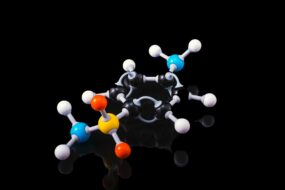- Home
- DRUGS
- Drugs acting on infectious Agents
- Isoniazid (Isonicotinic acid h ...
Isoniazid is a first-line antitubercular drug. It is an important component of the antitubercular regimens, unless one cannot tolerate the drug or the bacilli are resistant. Isoniazid is primarily tuberculocidal.The fast multiplying organisms are rapidly killed, but the quiescent ones are only inhibited.
Mechanism of action.
- Inhibition of mycolic acid synthesis, an essential fatty acid composition of the mycobacterial cell wall.
Resistance.
- Mutation of the catalase-peroxidase (KatG) gene; hence the bacilli do not generate the reactive metabolite of the drug.
- Mutation of the Kasa genes.
- Efflux of isoniazid from bacterial cell.
- Cross-resistance with other antitubercular drugs does not occur.
Adverse reactions.
- Peripheral neuritis and neurological manifestations occur;
- Numbness
- Mental disturbances
- Convulsions.
- Paresthesias
- Hepatitis in older patients and alcoholics
- Hepatotoxicity due to dose-related damage of hepatocytes.
- Lethargy, fever, rashes, acne, and arthralgia.
Doses.
- ISONEX 100, 300 mg tablets.
- ISOKIN 100 mg tablets.
- 100 mg per 5 ml liquid.












